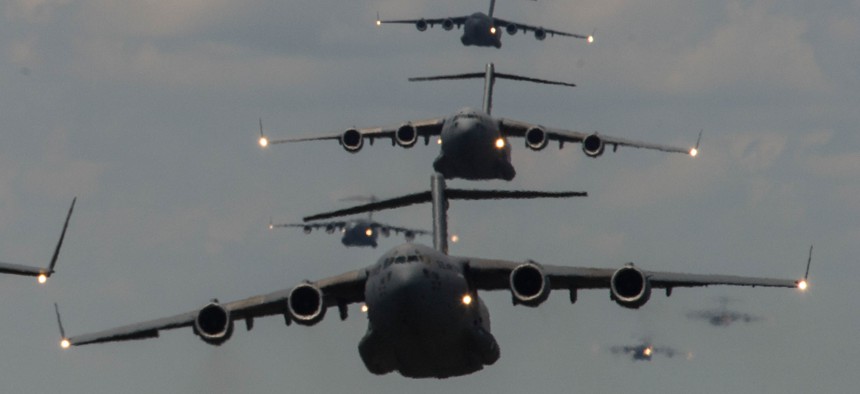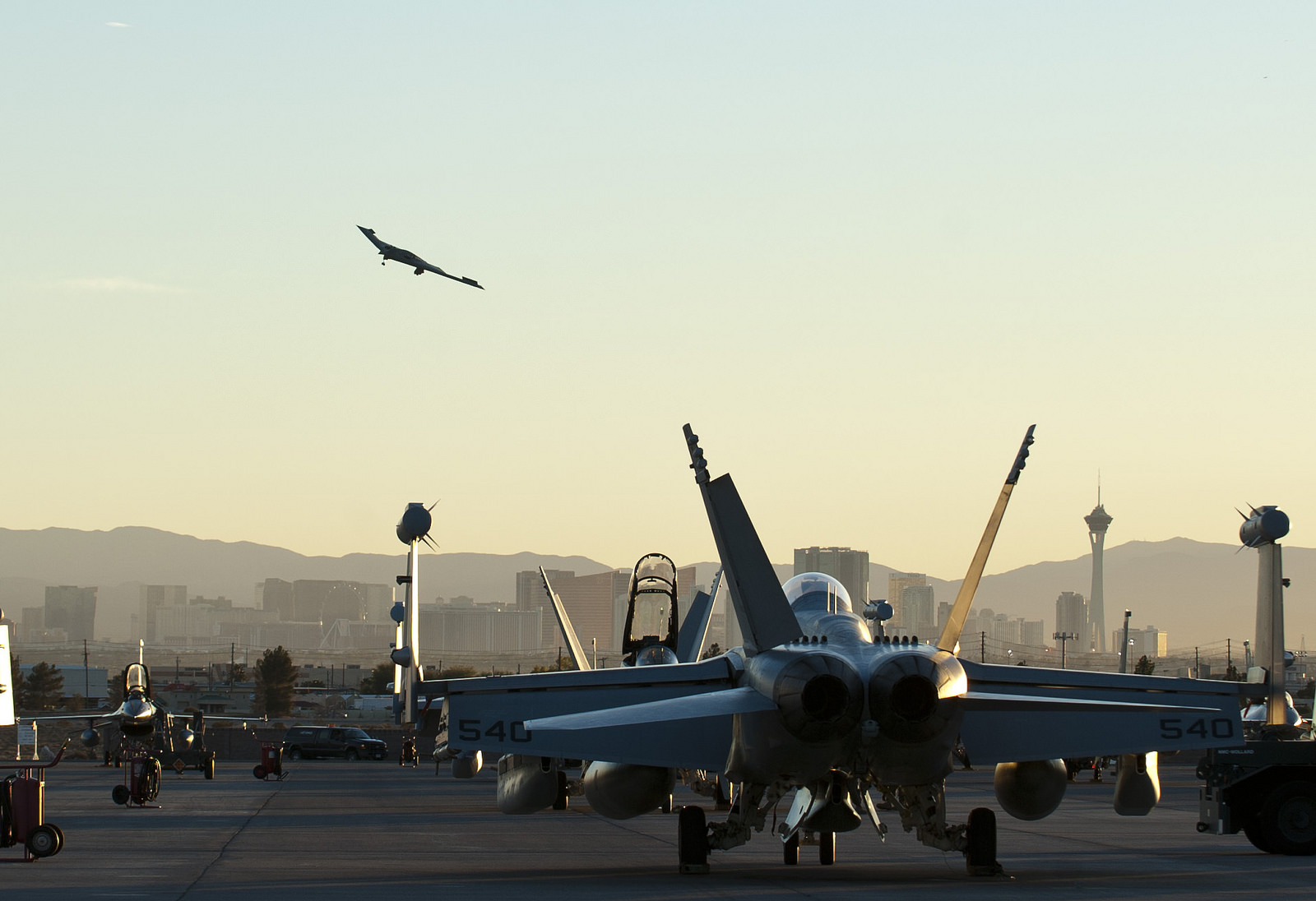
U.S. Airmen from Joint Base Charleston, S.C., conduct a multi-ship C-17 Globemaster III formation on May 21, 2015. U.S. Air Force photo by Staff Sgt. Corey Hook
Meet the Air Force’s New Acquisition System
We’re creating a new way of developing, building and buying that works better for the service and the defense industry. Here’s how.
The U.S. Air Force simply can’t afford to continue business as usual and expect to maintain air, space, and cyberspace superiority. That’s why one year ago, I launched a series of new activities designed to reduce cost and acquisition times while increasing innovation under the Air Force’s Bending the Cost Curve initiative, or BTCC.
By dedicating ourselves to partnering with the defense industry, taking bold actions within the Air Force, and continually measuring results, we are leading the way in creating a 21st Century acquisition system that truly fosters innovation and harnesses the full potential of American ingenuity. While there is still much work to be done, we’ve made a lot of progress in the last year. So, now is a great time to review what we’ve accomplished, discuss what hasn’t worked, and chart a course for the future.
First, it’s vital to acknowledge the critical importance of collaborating with industry. In years past, we’ve walled ourselves off from industry under the presumption that we can’t accomplish both imperatives at the same time. That approach hasn’t worked and has alienated us from the very people we rely on to meet the needs of our airmen.
We’re taking a different approach through BTCC. Our goal is to establish a continuous and transparent dialogue between government and industry, rather than focusing on sporadic calls for input.
Moreover, we are looking to expand the number of companies we engage in this process. We are now actively reaching out to innovative enterprises – big and small – to foster the same persistent dialogue we’re achieving with the existing defense industrial base. We need everyone’s ideas and intellect at the table to ensure our nation’s defense today and into the future.
BTCC is all about action and there’s been plenty of that over the last year. We’ve initiated 20 projects with more on the way that span the spectrum of issues within our acquisition enterprise. Of our first two projects, one seeks to improve how we acquire information technology for our business systems while another aims to reduce the time to award contracts when we know there’s only one supplier for a product or service.
On information technology, we listened to the advice of several corporate chief information officers and launched an IT Business Analytics Office in early 2015. To date, our office has identified over half a billion dollars in potential savings over the next two years and is implementing policies to realize those savings. We also worked with industry to slash our contract award time by 10 percent last year and are planning to reduce the timeline by another 12 percent this year. Our ultimate goal is to award sole source contracts in less than 10 months, from a starting point of more than 16 months. There’s still a long way to go but we are making clear, measurable progress.
We also are finding ways to engage the defense industry earlier during the process by which new requirements for weapons systems are developed and formalized. Four acquisition programs formed the pilot for this activity: the T-X trainer jet, Space-Based Infrared System, Long-Range Standoff Weapon, and a communication system linking our 5th generation fighter aircraft with our 4th generation jets. In each program, with better communication between the Air Force and its contractors, we conducted detailed affordability tradeoff studies, which are called cost-capability analyses, or CCA. While it’s still too soon to know what type of savings the four pilot programs will achieve, we know from other programs how important CCA can be.
For instance, we coupled steady industry input with CCA to our B-2 bomber program and saved potentially more than $1 billion as we implemented a new extremely high frequency satellite communications system.

A B-2 Spirit makes a final approach before landing during Red Flag 15-1, Feb. 6, 2015, at Nellis Air Force Base, Nev. / Air Force photo by Senior Airman Thomas Spangler
When I announced the award for the new Long Range Strike Bomber, I made note that the bomber would employ a modular, open mission systems architecture—meaning we can change out different elements of the aircraft’s mission systems as the threat, technology, or business cases evolve. Our Open Systems Acquisitions, or OSA, activity supports this effort. Over the summer, we used OSA to develop a product for the Air Force Distributed Common Ground System, or DCGS. Nineteen companies competed for an award, and 14 were outside the traditional defense industrial base. We ended up awarding contracts to two vendor teams who demonstrated impressive products and provided offerings that were 20 to 30 percent less than our initial estimates. To capitalize on this success, we’re creating a permanent OSA acquisition vehicle and lining up additional programs to participate in the process.
This is the future of acquisitions: fast, competitive, and affordable.
Looking forward, you can expect to see a steady flow of BTCC activities on a wide range of subjects. For example, we are exploring how artificial intelligence systems might aid government and the public in navigating federal acquisition rules, and we’re examining how wargaming principles could improve our acquisition strategies. Likewise, we plan to provide additional support and training on intellectual property rules, expand opportunities for small businesses, and much more. We’ll take on any challenge presented to us with intensity and rigor.
With so many BTCC projects either underway or having concluded, there is simply too much going on to convey here. Take a look at what we’re already doing on www.transform.af.mil and share your ideas with us. Our homepage contains links to everything we’ve tried under BTCC, including the things that didn’t work, as well as information on how you and your company can participate.
Ultimately, we can only make a difference with the support of our industrial base and the public. I encourage you to think carefully about issues you see as barriers to achieving affordability and superiority for our 21st century Air Force – and then share them with us.
Our doors are open for you to join us on this journey, and I sincerely hope you will.
NEXT STORY: China Is On A Collision Course with ISIS
